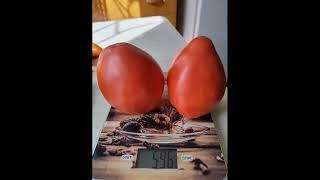### Smart Farming Techniques for Growing Vegetables
Smart farming leverages advanced technologies to optimize the growing process, increase efficiency, and ensure sustainability. Here are some key techniques used in smart farming for vegetable cultivation:
#### 1. **Vertical Farming:**
- **Stacked Layers:** Growing vegetables in vertically stacked layers to maximize space utilization.
- **Controlled Environment:** Using controlled environments with LED lighting, temperature, and humidity control to ensure optimal growth conditions⁴.
#### 2. **Hydroponics:**
- **Soilless Cultivation:** Growing plants in nutrient-rich water solutions, which conserves water and allows for precise nutrient management.
- **Efficient Resource Use:** Reduces the need for soil and minimizes water usage compared to traditional farming⁴.
#### 3. **Aeroponics:**
- **Mist-Based Nutrient Delivery:** Plants are grown with their roots suspended in the air and misted with nutrient solutions, promoting faster growth and higher yields.
- **Space Efficiency:** Ideal for urban farming and areas with limited space⁴.
#### 4. **IoT and Sensors:**
- **Real-Time Monitoring:** Using IoT devices and sensors to monitor soil moisture, temperature, humidity, and nutrient levels.
- **Data-Driven Decisions:** Collecting and analyzing data to make informed decisions about irrigation, fertilization, and pest control⁵.
#### 5. **Drones and Satellite Imagery:**
- **Precision Agriculture:** Drones and satellites provide aerial imagery to monitor crop health, detect pests, and assess soil conditions.
- **Efficient Management:** Helps in precise application of water, fertilizers, and pesticides, reducing waste and improving crop health⁵.
#### 6. **Automated Systems:**
- **Robotics:** Using robots for planting, harvesting, and packaging to increase efficiency and reduce labor costs.
- **Automation:** Automated irrigation and climate control systems ensure optimal growing conditions with minimal human intervention².
#### 7. **Climate-Smart Practices:**
- **Resilient Varieties:** Growing high-yielding and disease-resistant vegetable varieties to cope with climate challenges.
- **Sustainable Techniques:** Implementing practices like crop rotation, organic farming, and integrated pest management to enhance sustainability³.
### Benefits of Smart Farming:
- **Increased Yields:** Optimized growing conditions lead to higher yields and better quality produce.
- **Resource Efficiency:** Efficient use of water, nutrients, and space reduces waste and conserves resources.
- **Sustainability:** Sustainable practices minimize environmental impact and promote long-term agricultural viability.
- **Cost Savings:** Automation and precision techniques reduce labor and input costs, improving profitability.
By adopting these smart farming techniques, vegetable growers in the Middle East can overcome the challenges posed by the harsh climate and limited resources, ensuring a steady supply of fresh, high-quality produce.
Would you like more details on any specific technique or information on implementing these methods in your operations?
Smart farming leverages advanced technologies to optimize the growing process, increase efficiency, and ensure sustainability. Here are some key techniques used in smart farming for vegetable cultivation:
#### 1. **Vertical Farming:**
- **Stacked Layers:** Growing vegetables in vertically stacked layers to maximize space utilization.
- **Controlled Environment:** Using controlled environments with LED lighting, temperature, and humidity control to ensure optimal growth conditions⁴.
#### 2. **Hydroponics:**
- **Soilless Cultivation:** Growing plants in nutrient-rich water solutions, which conserves water and allows for precise nutrient management.
- **Efficient Resource Use:** Reduces the need for soil and minimizes water usage compared to traditional farming⁴.
#### 3. **Aeroponics:**
- **Mist-Based Nutrient Delivery:** Plants are grown with their roots suspended in the air and misted with nutrient solutions, promoting faster growth and higher yields.
- **Space Efficiency:** Ideal for urban farming and areas with limited space⁴.
#### 4. **IoT and Sensors:**
- **Real-Time Monitoring:** Using IoT devices and sensors to monitor soil moisture, temperature, humidity, and nutrient levels.
- **Data-Driven Decisions:** Collecting and analyzing data to make informed decisions about irrigation, fertilization, and pest control⁵.
#### 5. **Drones and Satellite Imagery:**
- **Precision Agriculture:** Drones and satellites provide aerial imagery to monitor crop health, detect pests, and assess soil conditions.
- **Efficient Management:** Helps in precise application of water, fertilizers, and pesticides, reducing waste and improving crop health⁵.
#### 6. **Automated Systems:**
- **Robotics:** Using robots for planting, harvesting, and packaging to increase efficiency and reduce labor costs.
- **Automation:** Automated irrigation and climate control systems ensure optimal growing conditions with minimal human intervention².
#### 7. **Climate-Smart Practices:**
- **Resilient Varieties:** Growing high-yielding and disease-resistant vegetable varieties to cope with climate challenges.
- **Sustainable Techniques:** Implementing practices like crop rotation, organic farming, and integrated pest management to enhance sustainability³.
### Benefits of Smart Farming:
- **Increased Yields:** Optimized growing conditions lead to higher yields and better quality produce.
- **Resource Efficiency:** Efficient use of water, nutrients, and space reduces waste and conserves resources.
- **Sustainability:** Sustainable practices minimize environmental impact and promote long-term agricultural viability.
- **Cost Savings:** Automation and precision techniques reduce labor and input costs, improving profitability.
By adopting these smart farming techniques, vegetable growers in the Middle East can overcome the challenges posed by the harsh climate and limited resources, ensuring a steady supply of fresh, high-quality produce.
Would you like more details on any specific technique or information on implementing these methods in your operations?
- Категория
- Севооборот
Комментариев нет.




